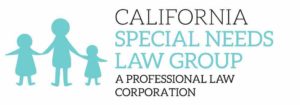“Schools Fail to Uphold Zero Tolerance Policies” — it sounds like a bad thing, but we promise, it isn’t. While they may sound like a good idea, zero tolerance policies have actually shown to be more than a little destructive. Luckily, America’s school system is finding solutions, and statistics are back on the rise.
So why is America relaxing on zero tolerance policies?
Although zero tolerance policies were first used in schools in the hopes of curbing crime (for example, underage consumption of alcohol, drugs, and vandalism), it quickly became clear that they do more to hurt than to help. Schools that enforce zero tolerance policies had statistically higher dropout rates, coupled with increased arrest records and decreased academic achievement — which is, quite understandably, considerably less than ideal for our schools.
Even individuals who once supported zero tolerance policies are beginning to change their tune. After finding that zero tolerance policies were counterproductive, many of America’s schools began initiatives to keep lawbreaking students in school, and more importantly, off the streets.
Who’s leading the charge, you may ask?
Judges, police officers, and juvenile detention directors — and they know what they’re talking about; it is their area of expertise, after all.
And hey, it just plain makes sense: how are we going to see any progress or forward motion if we continue to kick trouble students out of school? That’s certainly not going to help them stay out of the streets. The Obama administration also has a hand in things, pushing school districts to keep kids in school.
Don’t worry, though: these relaxed zero tolerance policies don’t apply to students who may be harmful or destructive, so safety is not an issue that comes into play. And, it also doesn’t mean that there are no consequences — students who commit crimes are sent to mandatory counseling, and must perform community service.
And guess what?
The decrease in zero tolerance policies is working.
The New York Times recently ran an article that focused on the relaxation of zero tolerance policies in Broward County, Florida — apparently, after revising their policies to help kids stay in school (rather than kicking them out), Broward County had vastly improved statistics. Almost immediately after making the change, they saw a staggering 41% drop in school-based arrests. It’s still a little on the early side to really be able to bask in the rest of the statistical results, but we’re all hopeful that the numbers will continue to improve — now that arrests have decreased, let’s see an increase in graduation rates and academic achievement!
Schools can be a tricky subject for many — it’s a delicate balance.
How do you make it a safe and supportive environment for our kids to learn in when crime is as rampant as it is today? Zero tolerance may not be the answer, but we continue to learn which methods will prove to be most effective. Looks like we’re continuing our education along with our kids!


